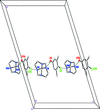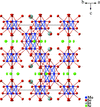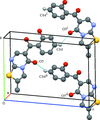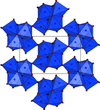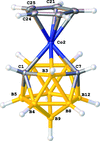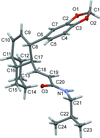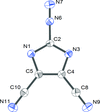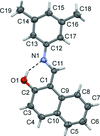issue contents
July 2015 issue

Cover illustration: Chiral molecular conductors can display interesting properties such as the magneto-chiral anisotropy effect. To access these materials, a straightforward a priori approach consists of combining, through electrocrystallization experiments, chiral counter-anions, existing in enantiopure form, to TTF-based radical-cations. Electro-oxidation of tetramethyltetrathiafulvalene (TMTTF) in the presence of the chiral anion (1S)-camphor-10-sulfonate (S-camphSO3-), in tetrahydrofuran/water medium, afforded the title 1/1 salt, formulated as TMTTFS-camphSO3·2H2O. In this salt, two types of TMTTF units are present as TMTTF.+ radical cations forming one-dimensional stacks in which they are associated two by two, forming dimers with short S S contacts. The S-camphSO3- anions also form stacks and are connected with each other via O-H
S contacts. The S-camphSO3- anions also form stacks and are connected with each other via O-H O hydrogen bonds. See: Sommer, Allain, Mézière, Pop & Giffard [Acta Cryst. (2015). E71, 748-751].
O hydrogen bonds. See: Sommer, Allain, Mézière, Pop & Giffard [Acta Cryst. (2015). E71, 748-751].
research communications










































































data reports
inorganic compounds


metal-organic compounds






organic compounds












































































































 journal menu
journal menu












